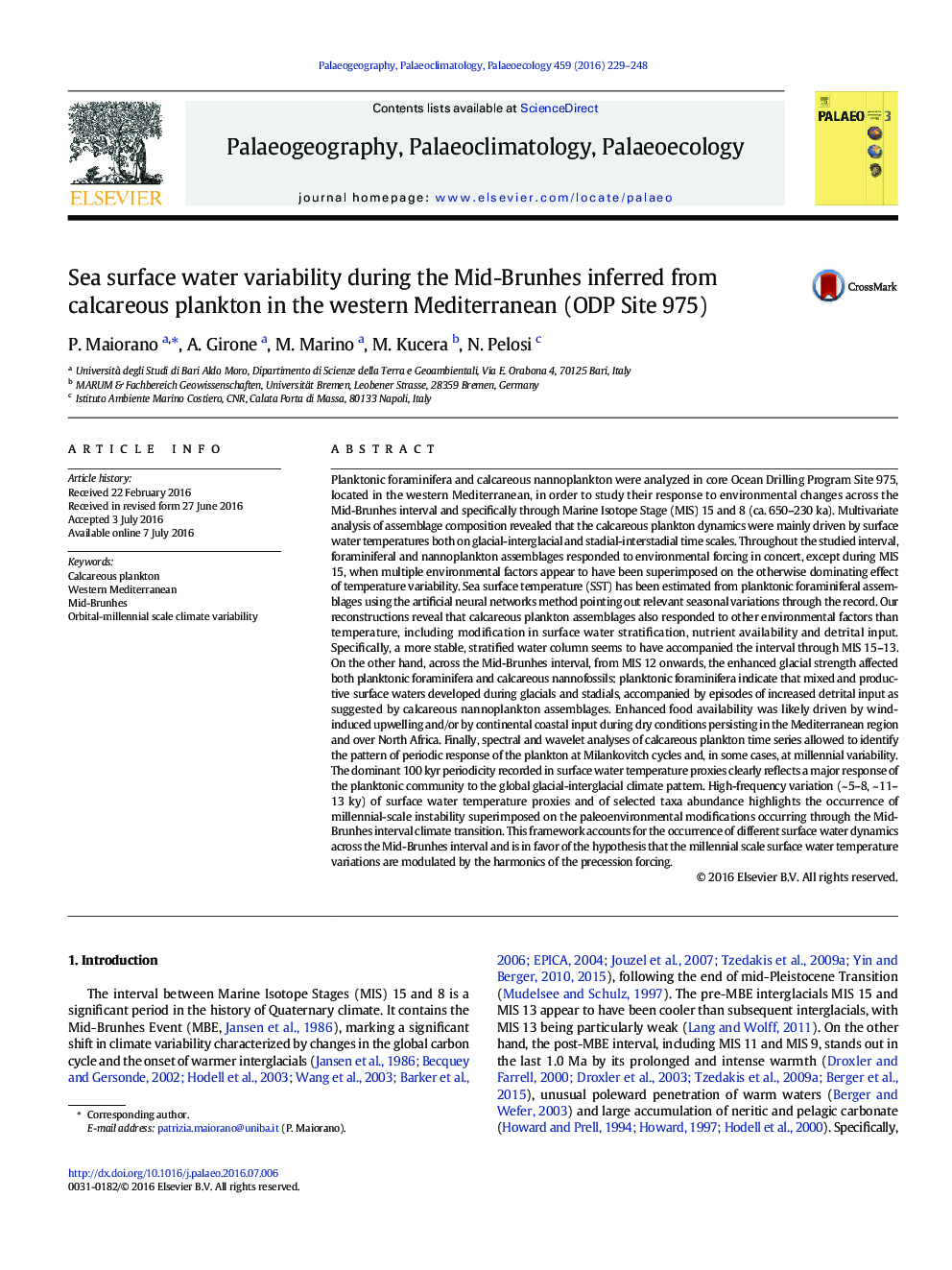| کد مقاله | کد نشریه | سال انتشار | مقاله انگلیسی | نسخه تمام متن |
|---|---|---|---|---|
| 4465634 | 1622132 | 2016 | 20 صفحه PDF | دانلود رایگان |

• Calcareous plankton is examined at ODP Site 975.
• Evidences rely on assemblage variations, seasonal SST fluctuations, spectral and wavelet analyses.
• Modifications in surface water dynamic across the Mid-Brunhes interval are identified.
• Planktonic community responds to the global glacial-interglacial climate pattern and to millennial scale climate instability.
Planktonic foraminifera and calcareous nannoplankton were analyzed in core Ocean Drilling Program Site 975, located in the western Mediterranean, in order to study their response to environmental changes across the Mid-Brunhes interval and specifically through Marine Isotope Stage (MIS) 15 and 8 (ca. 650–230 ka). Multivariate analysis of assemblage composition revealed that the calcareous plankton dynamics were mainly driven by surface water temperatures both on glacial-interglacial and stadial-interstadial time scales. Throughout the studied interval, foraminiferal and nannoplankton assemblages responded to environmental forcing in concert, except during MIS 15, when multiple environmental factors appear to have been superimposed on the otherwise dominating effect of temperature variability. Sea surface temperature (SST) has been estimated from planktonic foraminiferal assemblages using the artificial neural networks method pointing out relevant seasonal variations through the record. Our reconstructions reveal that calcareous plankton assemblages also responded to other environmental factors than temperature, including modification in surface water stratification, nutrient availability and detrital input. Specifically, a more stable, stratified water column seems to have accompanied the interval through MIS 15–13. On the other hand, across the Mid-Brunhes interval, from MIS 12 onwards, the enhanced glacial strength affected both planktonic foraminifera and calcareous nannofossils: planktonic foraminifera indicate that mixed and productive surface waters developed during glacials and stadials, accompanied by episodes of increased detrital input as suggested by calcareous nannoplankton assemblages. Enhanced food availability was likely driven by wind-induced upwelling and/or by continental coastal input during dry conditions persisting in the Mediterranean region and over North Africa. Finally, spectral and wavelet analyses of calcareous plankton time series allowed to identify the pattern of periodic response of the plankton at Milankovitch cycles and, in some cases, at millennial variability. The dominant 100 kyr periodicity recorded in surface water temperature proxies clearly reflects a major response of the planktonic community to the global glacial-interglacial climate pattern. High-frequency variation (~ 5–8, ~ 11–13 ky) of surface water temperature proxies and of selected taxa abundance highlights the occurrence of millennial-scale instability superimposed on the paleoenvironmental modifications occurring through the Mid-Brunhes interval climate transition. This framework accounts for the occurrence of different surface water dynamics across the Mid-Brunhes interval and is in favor of the hypothesis that the millennial scale surface water temperature variations are modulated by the harmonics of the precession forcing.
Journal: Palaeogeography, Palaeoclimatology, Palaeoecology - Volume 459, 1 October 2016, Pages 229–248